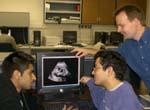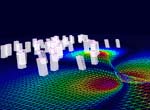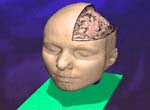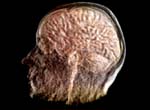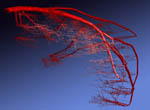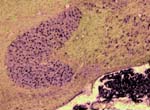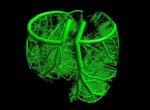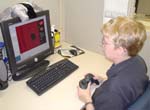|
Research InterestsDr. Meyer's research interests include scientific visualization, large-scale rendering, high-performance computing, 2-D and 3-D computer graphics, multi-resolution techniques, interactive rendering, and virtual reality. His research efforts are aimed at developing novel visualization algorithms, using state-of-the-art visual analytics techniques and providing parallel supercomputing support to researchers from various disciplines to help them understand their experimental and simulation data. He has developed interactive rendering methods for large, time-varying scientific data sets using wavelet transformation, space-subdivision and hardware acceleration methods. Dr. Meyer's research is focused on scientific visualization with applications in Geology (environmental clean-up), Civil Engineering (ground motion and structural response simulations for earthquake visualizations, disaster mitigation), and Biomedical Imaging (large-scale, interactive 3D volume rendering of CT/MRI data, image enhancement and segmentation). The common theme for all these interdisciplinary domains is the occurrence of tera- to exa-byte data sets and the need for real-time, interactive rendering and visual data analysis.BiographyDr. Meyer is a Display Exploration Engineer at Apple, Inc. His work is focused on developing hardware and software systems for novel display architectures. He also worked at Magic Leap, Inc., as Principal Systems Engineer on validating and calibrating multi-sensor display systems for augmented and mixed reality. Prior to these appointments he held a position as a Computer Systems Engineer in the Computational Research Division at Lawrence Berkeley National Laboratory. As a member of the Visualization Group, his research was focused on large-scale, parallel scientific data visualization and high-performance computing support for visualization applications. Dr. Meyer was also a member of the Analytics Group at the National Energy Research Scientific Computing Center (NERSC) and a member of the Remote Data Analysis and Visualization (RDAV) support staff of the National Institute for Computational Sciences (NICS) at Oak Ridge National Laboratory (ORNL). Previously, Dr. Meyer held a faculty position in the Department of Electrical Engineering & Computer Science and in the Department of Biomedical Engineering at the University of California, Irvine, where he conducted his research on high-performance computing and visualization techniques at the California Institute for Telecommunications and Information Technology (Calit2) since 2002. He received his Ph.D. from the University of Kaiserslautern, Germany, in 1999. He held an appointment as a post-doctoral researcher and lecturer in the Computer Science Department at the University of California, Davis, from 1999 to 2000, and maintains an Adjunct Assistant Professorship at the Computer Science and Engineering Department at Mississippi State University, where he was also affiliated with an National Science Foundation Engineering Research Center (2000-2002). Dr. Meyer has led and served on various conference and program committees for multiple professional organizations, including IEEE, ACM SIGGRAPH and EuroVis. He has published over 152 journal articles, book chapters, conference papers, abstracts and posters in his research field. |
Features |
|
|
|
|
|
|
|
|
|
|
|
|
